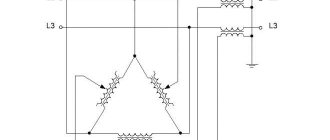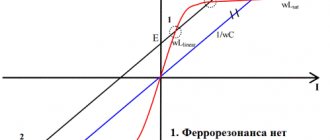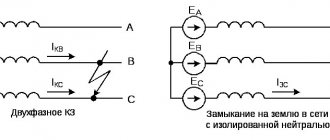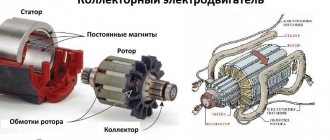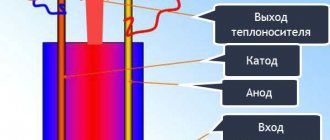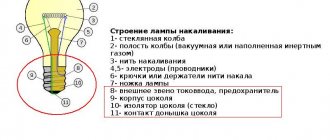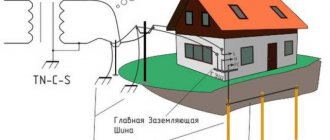The central heating capacity is not always sufficient to heat an apartment or house.
And there are also houses and premises where it is completely absent. Installing an electric boiler for a one-room apartment or two-room apartment is quite an expensive and troublesome task and requires constant monitoring and maintenance.
An old proven way out of this situation can be an ordinary heater. But what are they? What are their pros and cons, and what rules should you use to choose a heater for a bath, nursery, bedroom, office, etc.
Heater type
Today, the most popular types of heaters are:
- fan heaters
- models operating on the convection principle
- oil
- infrared
Each of them has its own advantages and disadvantages. Here's a summary table for comparison:
Although infrared received the most positive marks, there is no need to rush into making a choice. To choose the right model for yourself, use five rules.
Room area and device power
First of all, you need to decide what area you need to heat. The device of what power you need depends on this. How to calculate this power?
There is a simple and reliable formula that is suitable for all types of heaters except infrared.
For every square meter of a room with a standard ceiling height, it is advisable to have at least 100W of power.
For an infrared heater, there is an unspoken rule that 100W per 1m2 of area is its maximum power, not its minimum.
To the resulting value you need to add 200W for each window.
It follows from this that, for example, one room with an area of 13 m2 will be quite effectively heated by a model of 1.3 kW + 0.2 kW = 1.5 kW.
What if your ceiling height is 3m or more? Then use a slightly different calculation. Multiply the total area of the room by the actual ceiling height and divide this value by an average factor of 30. Next, also add 0.2 kW per window.
Of course, according to calculations, you can choose a less powerful device, especially for apartments where there is already main heating (central or boiler).
But given the constant heat loss and the fact that it will take longer to warm up the room, it’s better to play it safe. Devices with several heating stages are ideal. The more there are, the better.
Moreover, when the set temperature is reached, the built-in thermostat must turn off the device, no matter what level it is at. And when it decreases, turn it on again. Thereby significantly saving energy.
And also, a more powerful heater, when operated in “half” mode, will serve you much longer than its counterparts selected back to back.
And the area of the sections for heat distribution is higher - hence faster warming up.
Which electric heater is better to choose - checklist
When choosing an electric heater, first of all you need to understand in which room you plan to use it.
Power and energy efficiency
The main characteristics of heating devices are power and efficiency. Therefore, if you plan to use the device to work in a spacious room, then you need a model with more power.
As a rule, the technical characteristics of heaters now indicate the maximum heating area, as well as power consumption.
The optimal ratio is considered to be 100 W per 1 sq. m at standard ceiling heights.
Heaters consuming up to 1.5 kW/hour to maintain optimal temperature in a room of 20 square meters. m. are considered economical. And if the device is used as an additional one, then the power can be even lower - up to 0.3-0.5 kW/hour.
“However, there is a danger that a low-power heater may not create a comfortable temperature in severe frosts. So it’s advisable to choose something in between,” says Viktor Savelyev, a consultant for a company selling and installing climate control equipment.
Safety
You should consider not only the size, but also the purpose of the room. For example, if there is a child in the house, it is advisable to purchase a device that cannot get burned and also has child-proof controls.
For wet rooms, devices with protection from water are needed, for dusty rooms - with protection from dust, etc. The advantage is the presence of automatic shutdown functions when tipping over or overheating.
type of instalation
For some models of convector, infrared and convection-infrared heaters, not only floor installation is possible, but also wall and ceiling installation. This is especially true for small rooms, when it is important to preserve useful space.
Control type
According to the type of control, heaters can be mechanical or electronic. The first option may be cheaper. But electronic control allows you to set fine settings, program operating modes and set the exact temperature.
Noise level
The quietest are infrared, the loudest are fan heaters and heat guns. In addition, sounds can be made by the control panel and on/off relay. When the temperature changes, the body of the device may slightly deform and crack.
Extra options
Do not ignore other important parameters on which comfort depends.
✓Thermostat. This device is designed to maintain a set temperature. There are mechanical and electronic. The first ones are more reliable, and the second ones are more accurate.
✓Timer. An optional, but at the same time very useful feature. Allows you to turn off the device after a specified time.
Modern models of electric heaters may also have the ability to control the device from a smartphone, a built-in ionizer, the ability to integrate into the Smart Home system and other useful features.
Size and dimensions
It is quite logical to assume that the greater the power of the heater, the larger its overall dimensions will be.
However, note that in many models this only changes the width. But the height and thickness remain unchanged.
This is a very important point when placing heating on the wall and integrating it into other design elements.
At the same time, from leading manufacturers, even with the same power, you can always choose:
- low and very wide, for large windows or stained glass windows
- and vice versa - tall and narrow in small rooms
For example, two models with the same power of 2 kW, but what a difference in the width of the case. Which one do you think will heat better?
Control system
In stores you can buy heaters with two types of control:
- mechanical
- electronic
Models with mechanical control are the simplest and cheapest. However, they have a whole bunch of shortcomings that not everyone is aware of.
- firstly limited functionality
- In addition, during long-term use they are more susceptible to wear. This means they will fail earlier than electronic ones.
- The error when setting the set temperature can reach several degrees!
- When turning on and off automatically they click quite loudly
And this happens constantly every 10-20 minutes. So you won’t want to leave such a unit in the bedroom overnight.
The electronic system opens up additional possibilities, including programming operating modes. They are also more accurate.
The temperature in expensive models can be set with an accuracy of a few tenths of a degree!
However, do not forget that electronic ones are often equipped with a backlight, which may not turn off completely.
And this can be quite irritating, especially if you are used to falling asleep in complete darkness.
There is a natural desire to cover such a screen with something. And here the most important thing is not to forget the basic safety rules for heaters:
- do not dry anything on them and do not cover the radiator openings
- Do not place near curtains or furniture
Therefore, check the lighting, as they say, without leaving the cash register.
Efficiency of the main types of home heaters
Everyone knows what efficiency is, this is the difference between the energy expended and the energy produced. When calculating the coefficient, we tried to provide the most detailed answer in tabular form . Since, in addition to the energy component, there are also financial costs for the purchase of the device itself, electricity costs, the calculation is made taking into account these factors.
The table shows the average values obtained from tests of various types of heaters (thanks to one well-known store for providing testing equipment). The cost for 1 kW of energy is 4 rubles. Heating took place for 1 hour in a furnished room of 18 square meters with an initial temperature of 22 degrees C. Heater power 1500 W. Control type – electronic.
| View | Average price, r | Declared maximum power, W | Temperature change over 1 hour, gr. WITH | KW consumed according to the meter | Cost of consumed electricity, p |
| Fan heater | 1250 | 1500 | +3,9 | 1,69 | 6,76 |
| Oil | 3200 | 1500 | +5,1 | 1,74 | 6,96 |
| Convector | 3540 | 1500 | +6,2 | 1,52 | 6,08 |
| Infrared | 3580 | 1500 | +6,1 | 1,22 | 4,88 |
| Micathermic | 7800 | 1500 | +7,0 | 1,24 | 4,96 |
The obtained figures are approximate, since many important factors influencing the result are not taken into account, such as: a single brand of the manufacturer, humidity in the room, the model of the heater itself, direction, voltage in the electrical circuit, etc.
But nevertheless, the figures turned out to be the following; the highest efficiency was obtained from convectors, infrared, and micathermic heaters. The fan heater was barely able to heat the room by 4 degrees.
The oil radiator heated the room quite well; after the end of the experiment, the room continued to heat up and remained heated longer than others, so it should not be written off due to high power consumption.
In addition to the electronic type of control, there are also mechanical (outdated) and inverter (the most modern and economical). If we compare the electricity consumption of similar heaters with different control modules, the following figures come out:
mechanical - 0% savings, the electronic unit allows you to save 30% in contrast to the mechanical one, the inverter control unit is the most economical, this method of thermoregulation allows you to save up to 80% of electricity compared to mechanical regulators.
The cost of heaters with inverter units can vary from 8,000 to 30,000 rubles. In the long term, as a rule, such costs pay off. More details in the video:
Heating temperature
For an apartment, especially one in which there are small children, it is not recommended to buy heaters whose housings and elements themselves heat up to high temperatures.
For example, oil batteries without a thermostat (or if it suddenly breaks down) can heat up to 120-150 degrees!
It turns out that 2 kW are hidden in a small case, which can only be fully obtained by heating the heater to such temperatures.
At the same time, in order to comply with safety rules and not overheat the surface above 60-70 degrees, temperature sensors are installed. And they, in turn, turn off the heater, which actually never reached its maximum parameters.
And what can we say about the open hot spiral of the fan heater!
Therefore, in this regard, convectors can be considered the safest. When they are ceramic, the body temperature does not exceed 60 degrees. It’s not for nothing that many of them have signs “For kindergartens.”
Among infrared models, micathermic ones stand out in terms of safety.
The heating element in them emits heat, but does not heat up itself.
But for quartz, carbon and halogen filaments, the filaments heat up from 2000 degrees and above, after which infrared radiation actually begins to be produced.
Oil-cooled radiators
The appearance and principle of operation of such devices are completely similar to ordinary heating batteries. Only they are filled with mineral oil, and they are heated by electric heating elements installed directly inside the internal cavity of the device. They are successfully used in offices and residential premises. There are open and closed oil radiators. The ribs of the latter are protected by a metal casing. The main advantage of these devices is that they do not burn up the oxygen in the room and do not heat up to temperatures dangerous for small children. Especially the last property concerns closed radiators.
Open and closed oil radiators
Reviews
Once you have decided on the type of heater, all you have to do is choose a specific brand and manufacturer. And then most immediately open online store sites with reviews.
Oddly enough, you can find completely opposite opinions on the same models on different sites. It is no secret that often the stores themselves or the moderators of the Internet portal can write certain paid comments and supposedly expert opinions.
Who to believe? Here the advice can be simple.
Try to focus on the reviews that people leave with real photographs of heaters at home in their apartment.
This way, most of the useless advertising information will be eliminated.
Let's take a closer look at the operating principle and each type of heater separately. To view, click on the corresponding tab with the name.
ConvectorInfraredOil Fan Heater
Convector
The operating principle of the convector is based on a simple law of physics. Cold air naturally enters the device from below. After this, heating occurs inside the housing and, already heated, it exits through the upper grilles (at an angle) into the ceiling.
The case itself does not heat up as much as in radiator models. It is the air that heats up.
The truth is that the room does not warm up immediately. Unless there is an additional fan built inside. If you come home from work to a cold apartment and turn on the convector, then the floor of the house will be cold for a very long time.
Moreover, at a small height from the floor there will also be a layer of cold air. The warmest place in this case is the ceiling. If there is even a small draft, it will be quite difficult to warm up the walls and furniture in the room.
Almost all convectors are wall-mounted, but some are also equipped with legs.
Remember the rule that the lower the convector is installed, the more efficiently it will work out its kilowatts.
The wall-mounted installation option looks very aesthetically pleasing, but moving it from the bedroom to the living room or kitchen will no longer work.
The main heating element of a convector is a spiral. Therefore, such devices also burn oxygen.
But recently, heaters with a tube consisting of a large number of fins have increasingly begun to be used.
Thanks to this, even during prolonged operation, their body does not heat up more than 90 C. And for many models, the temperature is even less than +55-60 degrees.
Such options will be a good solution for families with small children.
When installing heating in a bathroom, make sure that the model has a minimum degree of protection IP24.
What do these numbers mean?
The first digit indicates that the device is protected from the penetration of solid objects larger than 12 mm into it. For example, the fingers of an adult.
The second number (4) indicates that the heater is protected from splashing water from any direction.
How much it will actually cost you to heat your home with convectors as the main source of heat can be found out from this video:
Infrared heaters
Most people are still wary of infrared models. Their operating principle is somewhat similar to the sun.
The infrared radiation of the lamps does not heat the air in the room, but the objects located in it, which then give off heat to the surrounding space. Heating occurs due to invisible rays in the infrared spectrum.
You need to get used to this. The feeling under the heater itself will be as if you were sitting near a stove. One side is fried and the other is at room temperature.
To protect yourself from the effects of such equipment, follow basic rules of use.
If you stay under such a heater for a very long time, you may feel a headache and fatigue.
However, the same thing happens from prolonged exposure to the sun or when sitting for a long time near an open fire.
In addition, the infrared spectrum in excess quantities can negatively affect the skin. Such a beam is capable of penetrating to a depth of several centimeters under the skin and only then releasing heat from the inside, heading to the outer surface of the skin.
Everything here depends on the power of the source and the duration of stay under it. If you follow the instructions, then you should not be afraid of such radiation. How to protect yourself?
The most important thing is to maintain a minimum distance from the infrared heater. It must be at least 2 meters.
The advantages of infrared technology include:
- instant warmth
- almost complete absence of oxygen loss
- no odor
- noiselessness
And as numerous tests show, such heating is the most fireproof. Even if you place a Christmas tree directly under an infrared heater (right up to its touching the protective screen), setting it on fire will be problematic.
Just don’t try to purposefully repeat such experiments at home. Heater is different from heater, and compliance with safety regulations should come first.
The device is lightweight. It can be equally successfully placed on the walls or ceiling (hung on mounting chains like a fluorescent lamp).
So fix it on special legs.
However, there are also some peculiarities. One of the disadvantages is that the efficiency of the device is limited by the dispersion angle.
Step outside this zone and you will immediately feel a temperature difference of several degrees. From the very beginning, IR heaters were created specifically for heating only work areas in rooms without heating.
To improve the heating efficiency when suspended from the ceiling, you can paint the floors a dark color.
There are also models made from ceramic plates, which also emit infrared thermal radiation, plus they look beautiful.
They have low power and are resistant to moisture. Therefore, they can be safely used in the bathroom.
Similar models of infrared heaters can be installed in children's rooms, on balconies and even outside in gazebos.
Oil heater
The operating principle of an oil heater is somewhat similar to a conventional battery. First, the heating element heats up. Then mineral oil from it. Then the radiator housing and only lastly the surrounding air.
Therefore, the oil radiator warms up the room rather slowly.
It may take about an hour before you feel warm. However, after switching off, it does not cool down quickly either.
So, a comfortable temperature in the room remains for a long time. It is believed that oil heaters do not “burn” oxygen and dust in the air, at least to the same extent as a fan heater. This is not entirely true. Indeed, there is no unpleasant odor from them.
However, if such a battery operates continuously in the bedroom, you will wake up with a heavy head.
There should also be a minimum of noise. If it is noisy, this indicates its “quality”.
Most likely, the mineral oil inside is mixed with water. When overheated above 90 degrees, such a mixture inside already begins to boil and click.
Oil radiators are also resistant to tilting and falling. The element that heats the oil is located at the bottom of the device so that the hot liquid rises up by itself.
If you place the device on its side or tip it over (your child may accidentally do this), an air pocket will form next to the heating element.
A spiral not cooled by oil will quickly overheat and even a small explosion is quite possible.
To make matters worse, the oil spills onto the floor and begins to fuel the fire. Therefore, such a seemingly “safe” device must be treated with extreme caution.
And it is better not to use them for longer than 5-7 years. Even if they still heat properly. Firstly, the oil in them gradually evaporates. Secondly, the internal wiring dries out and the contacts burn out.
The best inexpensive, economical heaters according to experts, TOP-15
When choosing a heater, it is often difficult to understand just by looking at it in a store whether it is good or not, and testing for functionality is also not enough. Before going to the store, it is important to know exactly which of the heaters will actually cope with its task, and which one should not be considered. For this purpose, we have compiled a rating of the best and inexpensive heaters, suitable for a home, cottage or apartment, for a room of 20 square meters, with a power of 1000 to 2000 W. This rating is based on expert opinion and experience of use by other users. When choosing, also pay additional attention to reviews from other users and the cost in retail stores.
Electric (fan heaters)
Electrolux EFH/S-1115 1500 W (1100 – 4000 RUR)
Zanussi ZFH/C-408 1500 W (1450 – 4000 RUR)
Ballu BFH/C-31 1500 W (790 – 3600 RUR)
Oil radiators
Ballu Classic BOH/CL-09 2000 W (2800 – 3300 RUR)
Electrolux EOH/M-6209 2000 W (3600 – 4900 RUR)
Timberk TOR 21.1507 BC/BCL 1500 W (3400 – 3950 RUR)
Convectors or convection heaters
Ballu Enzo BEC/EZER-1500 1500 W (4230 – 4560 RUR)
Electrolux ECH/AG2-1500 T 1500 W (3580 – 3950 RUR)
Electrolux ECH/AS-1500 ER 1500 W (4500 – 5800 RUR)
Infrared
Ballu BIH-LW-1.5 1500 W (2390 – 2580 RUR)
Almac IK11 1000 W (3650 – 3890 RUR)
Timberk TCH A1N 1000 1000 W (4250 – 4680 RUR)
Infrared micathermic
Polaris PMH 2095 2000 W (RUB 7250 -8560)
Polaris PMH 2007RCD 2000 W (6950 – 8890 RUR)
De'Longhi HMP 1000 1000 W (6590 – 7250 RUR)
Fan heater
In fan heaters, air is heated using a hot electric coil and a fan that drives air through it.
The room gets warm quite quickly, but when you turn it off it also gets cold quickly.
Since the coil is very hot, this type of heater dries out the air and burns house dust.
As a result, specific odors appear. Therefore, in recent years, models with a ceramic heating element that are free of these disadvantages have become widespread.
In addition, the fan heater makes quite a noticeable noise during operation. So you won't get much sleep at night with him.
But its obvious advantages are its compact size and low cost.
Electric fireplaces
These devices not only heat the room, but also perform a decorative function - they are equipped with lighting that simulates burning wood. Often these are purchased because of their appearance. Their disadvantages are high energy consumption.
pros
• fast heating; • is a piece of furniture; • can be used as decoration – without heating function.
Minuses
• high price; • large weight and dimensions; • significant energy consumption.


